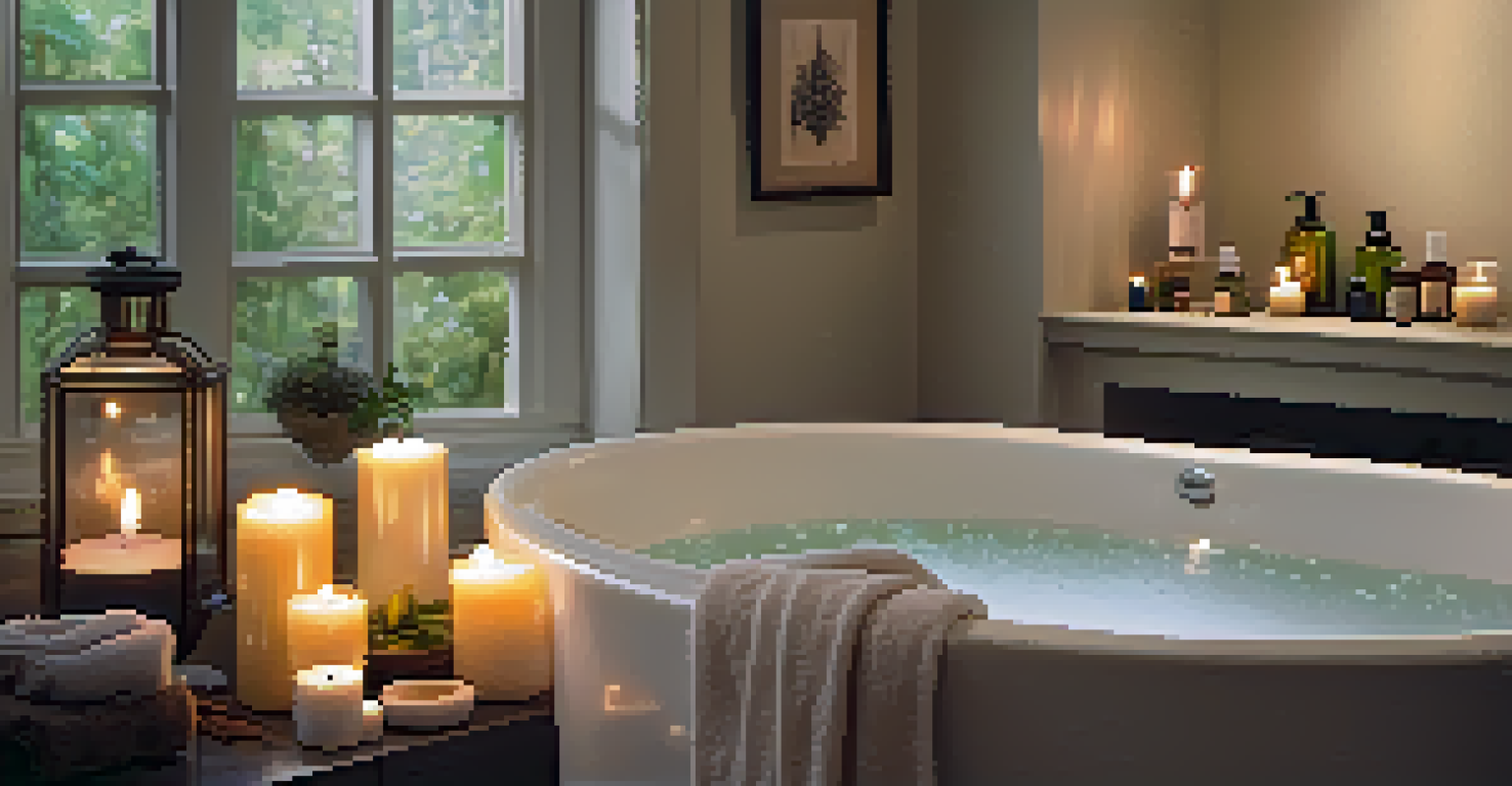Incorporating Aromatherapy into Your Daily Wellness Routine

Understanding Aromatherapy and Its Benefits
Aromatherapy is the practice of using essential oils extracted from plants to promote physical and emotional well-being. These natural oils can be inhaled, applied to the skin, or used in diffusers, creating a multi-sensory experience. The benefits of aromatherapy range from reducing stress and anxiety to improving sleep quality and boosting mood.
The use of essential oils can be a simple yet powerful way to enhance your physical and emotional well-being.
For example, lavender oil is renowned for its calming properties and can help you unwind after a long day. Similarly, citrus scents like lemon and orange are invigorating, which makes them perfect for daytime use. By understanding these benefits, you can choose the right oils to support your wellness goals.
Incorporating aromatherapy into your routine isn't just about relaxation; it's about creating an environment that nurtures your overall health and happiness. This holistic approach can transform mundane moments into opportunities for self-care.
Choosing the Right Essential Oils for You
With countless essential oils available, choosing the right ones for your needs is crucial. Start by identifying your wellness goals—are you seeking relaxation, energy, or focus? For relaxation, oils like chamomile and ylang-ylang are fantastic, while peppermint or rosemary can enhance your focus and energy levels.

It's also helpful to consider any personal preferences or sensitivities you may have. Some people find certain scents overwhelming or triggering, so it’s always wise to test a small amount first. For instance, if you love the smell of jasmine but find it too strong, try blending it with a milder oil like coconut.
Aromatherapy Enhances Well-Being
Using essential oils can promote physical and emotional health by reducing stress, improving sleep, and boosting mood.
Remember, aromatherapy is a personal journey, and there's no one-size-fits-all solution. Experimenting with different oils will help you discover what resonates best with your body and mind.
Creating a Morning Aromatherapy Ritual
Mornings set the tone for the rest of your day, making them the perfect time to incorporate aromatherapy. A simple ritual could involve using a diffuser with invigorating oils like eucalyptus or citrus to awaken your senses. This not only helps in boosting your mood but also enhances your alertness.
Aromatherapy is about creating a sacred space for the body and mind to heal and rejuvenate.
You can also apply a diluted essential oil blend to your pulse points, such as wrists or neck, as you prepare for the day. The scent will follow you, providing a gentle reminder to stay focused and energized. This practice can be particularly beneficial on those sluggish mornings when you need an extra nudge.
Creating a morning ritual doesn’t have to be time-consuming; just a few minutes can make a significant difference. Pairing your aromatherapy practice with other morning habits, like stretching or journaling, can help solidify this new routine.
Incorporating Aromatherapy at Work
The workplace can be a source of stress, but aromatherapy can help create a more pleasant environment. Consider using a personal essential oil inhaler or a rollerball to apply calming oils like lavender or bergamot throughout the day. This can help ease anxiety and promote a more focused mindset.
If you work in an open office, a portable diffuser can be a great investment. By diffusing relaxing scents during breaks, you can create a mini-retreat at your desk. This simple act can help you recharge, turning a busy workday into a more manageable experience.
Personalize Your Oil Choices
Selecting essential oils should align with your individual wellness goals and preferences for the best experience.
Additionally, incorporating aromatherapy into your breaks can enhance productivity. Even a few deep breaths of your favorite essential oil can refresh your mind and help you tackle tasks with renewed vigor.
Using Aromatherapy for Better Sleep
Sleep is a vital component of wellness, and aromatherapy can play a significant role in improving sleep quality. Establishing a bedtime routine that includes essential oils like lavender or chamomile can signal your body that it’s time to wind down. Diffusing these calming scents in your bedroom before sleep can create a serene atmosphere.
Another effective method is to apply a few drops of essential oil to your pillow or bedsheets. This allows you to breathe in the soothing aroma as you drift off. Many people find that this simple addition to their nightly routine makes a world of difference in their sleep quality.
Consider also incorporating calming practices like reading or taking a warm bath with essential oils before bed. These rituals, paired with aromatherapy, can help transition your mind and body into a restful state.
Aromatherapy for Stress Relief and Relaxation
In our fast-paced world, finding effective ways to manage stress is essential, and aromatherapy is a wonderful tool. Scents like frankincense and sandalwood are known for their grounding properties, making them perfect for moments when you need to center yourself. You can use these oils in a diffuser, or even just inhale them directly from the bottle during stressful situations.
Creating a calming space in your home with essential oils can also be incredibly beneficial. Designate an area where you can unwind and incorporate calming scents to transform it into a peaceful retreat. This could be a corner of your living room or a cozy nook in your bedroom.
Aromatherapy for Family Wellness
Incorporating essential oils into family routines can create a calming environment and enhance overall well-being for everyone.
Additionally, don’t underestimate the power of a warm bath infused with essential oils. This not only provides physical relaxation but also allows you to enjoy a sensory experience that promotes mental clarity and emotional balance.
DIY Aromatherapy Blends for Everyday Use
Crafting your own essential oil blends can be a fun and rewarding way to personalize your aromatherapy experience. Start with a base oil, like sweet almond or jojoba, and experiment with different essential oils that align with your wellness goals. For instance, blending peppermint with eucalyptus creates an energizing scent perfect for a morning boost.
You don’t have to get it perfect on the first try; part of the joy is experimenting. Keep track of your blends and how they make you feel, so you can refine your formulas over time. This practice can also deepen your connection to the oils, making your experience even more meaningful.

Creating your own blends also allows you to avoid synthetic fragrances, ensuring your aromatherapy is as natural as possible. Plus, it’s a wonderful way to share the benefits of aromatherapy with friends and family by gifting them personalized blends.
Incorporating Aromatherapy into Family Wellness
Aromatherapy isn't just for adults; it can benefit the entire family. Introducing essential oils to your family's wellness routine can create a harmonious environment. For instance, using a diffuser with calming oils like lavender can help children relax before bedtime, promoting better sleep for everyone.
When using oils with children, always ensure they are diluted properly and safe for their age group. Oils like chamomile and mandarin are generally considered safe for kids and can be great for easing anxiety or promoting a cheerful atmosphere.
Involving your family in the process—like choosing scents together or creating blends—can enhance the experience. It fosters a sense of teamwork and mindfulness, making wellness a shared journey that everyone can enjoy.